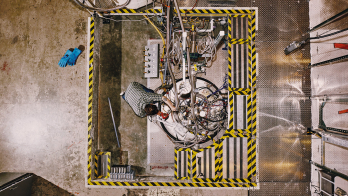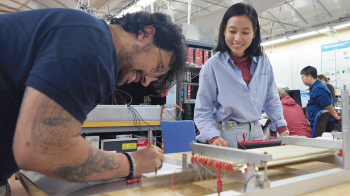The LHCb team has for the first time measured cosmic rays passing through three of the experiment’s subdetectors simultaneously, selected by muon triggers.

During a global-commissioning run on 3 April, the LHCb team used three of the experiment’s subdetectors – the electromagnetic calorimeter (ECAL), the hadronic calorimeter (HCAL) and the muon system – to trace the paths of cosmic-ray muons. The successful detection of cosmic rays confirms that the different detectors are synchronized, that the software chain works and that the raw data make sense. The software enabled the LHCb team to see 3D reconstructions of the tracks of the muons passing through the subdetectors, illustrating the energy deposited in each of the activated calorimeter cells and the signals in the muon chambers.
The LHCb detector looks different from the standard hadron collider detector because of its focus on heavy flavour particles, which are produced at predominantly low angles and in the same “forward” cone. The subdetectors are arranged in vertical planes along the beamline, more like a fixed-target experiment. This means that tests using cosmic rays, which are predominantly vertical, can only be carried out on certain subdetectors, such as the calorimetry and muon systems, which have large surface areas and can detect particles coming from all directions.








